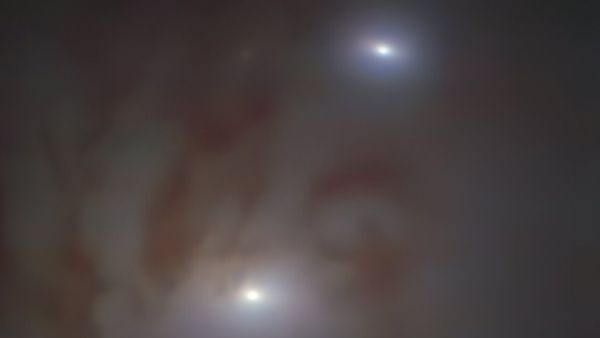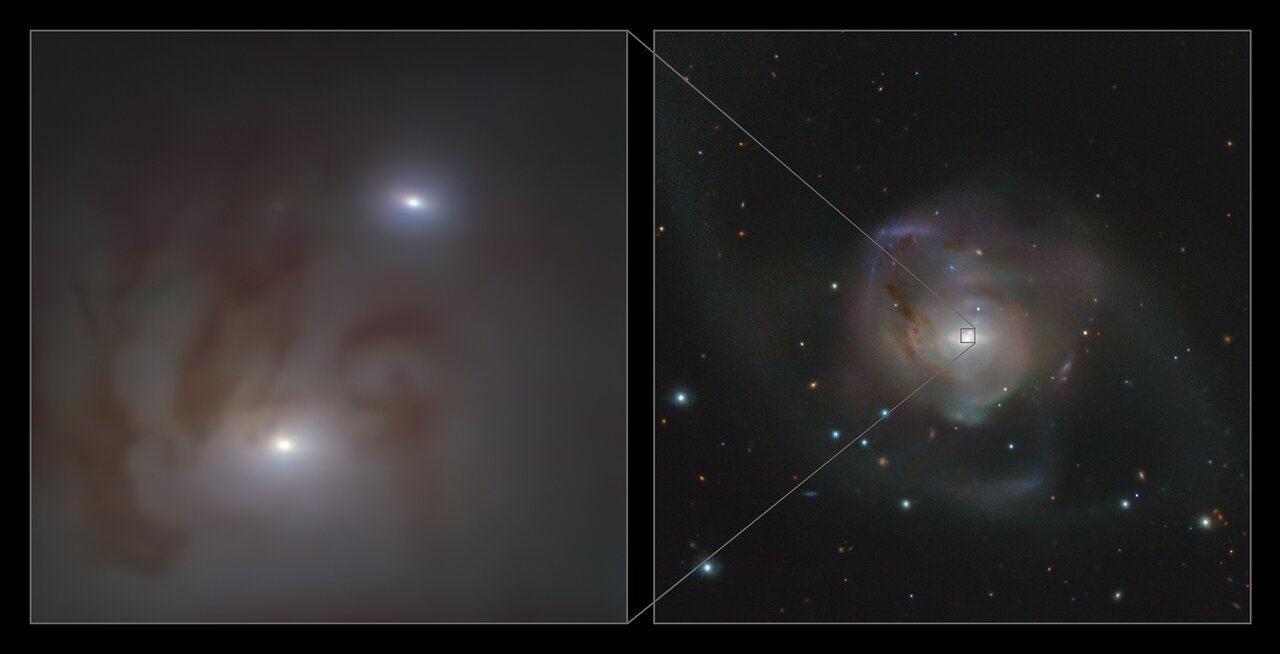This pair of merging black holes is the closest to Earth we've ever found
Scientists expected that an elusive black hole pair might be hiding in a nearby galaxy, now they can finally see it.

A pair of supermassive black holes that will soon become one has been discovered hiding in a nearby galaxy.
The two black holes dance around each other at the center of the galaxy NGC 7727, located some 89 million light-years away from Earth in the constellation Aquarius. Scientists say they have never seen such a pair so close to our planet, but also so close to each other.
The black hole couple, which will merge into one giant black hole 250 million years from now, escaped detection for so long because it somehow doesn't emit much X-ray radiation, the usual giveaway indicating the presence of black holes. It was discovered and analyzed by a power couple of telescopes, the Very Large Telescope at the European Southern Observatory (ESO) in Chile and the Hubble Space Telescope.
Related: 8 ways we know that black holes really do exist
"It is the first time we find two supermassive black holes that are this close to each other, less than half the separation of the previous record holder," Karina Voggel, an astronomer at the Strasbourg Observatory in France and lead author of the new study, said in a statement.
The previous record holder for the closest known black hole couple lies 470 million light-years away from Earth, more than five times farther than the newly discovered duo. The close distance of the NGC 7727 pair enabled astronomers for the first time to determine the masses of the two black holes by measuring how their gravity affects stars in their vicinity.

The larger of the two black holes has a mass of almost 154 million suns. The smaller one, which orbits its larger companion at a distance of only 1,600 light-years, is 6.3 million times more massive than our star.
Sign up for the Live Science daily newsletter now
Get the world’s most fascinating discoveries delivered straight to your inbox.
Supermassive black holes usually sit at the center of large galaxies, and when two galaxies collide and merge, so do the black holes.
The discovery, scientists said, provides a glimpse into the formation of very large supermassive black holes, but also suggests that many more black holes and merging pairs might be lurking in other nearby galaxies.
"Our finding implies that there might be many more of these relics of galaxy mergers out there and they may contain many hidden massive black holes that still wait to be found," said Voggel. "It could increase the total number of supermassive black holes known in the local universe by 30%."
Scientists expect to supercharge the search for supermassive black holes and black hole pairs in the upcoming years with the completion of ESO's Extremely Large Telescope (ELT) in northern Chile, which is currently expected in 2024.
"With the HARMONI [High Angular Resolution Monolithic Optical and Near-infrared Integral field spectrograph] instrument on the ELT we will be able to make detections like this considerably further than currently possible," ESO astronomer Steffen Mieske, a co-author of the discovery, said in the statement.
The discovery was described in a paper published on Nov. 30 in the journal Astronomy & Astrophysics.
Follow Tereza Pultarova on Twitter @TerezaPultarova. Follow us on Twitter @Spacedotcom and on Facebook.











